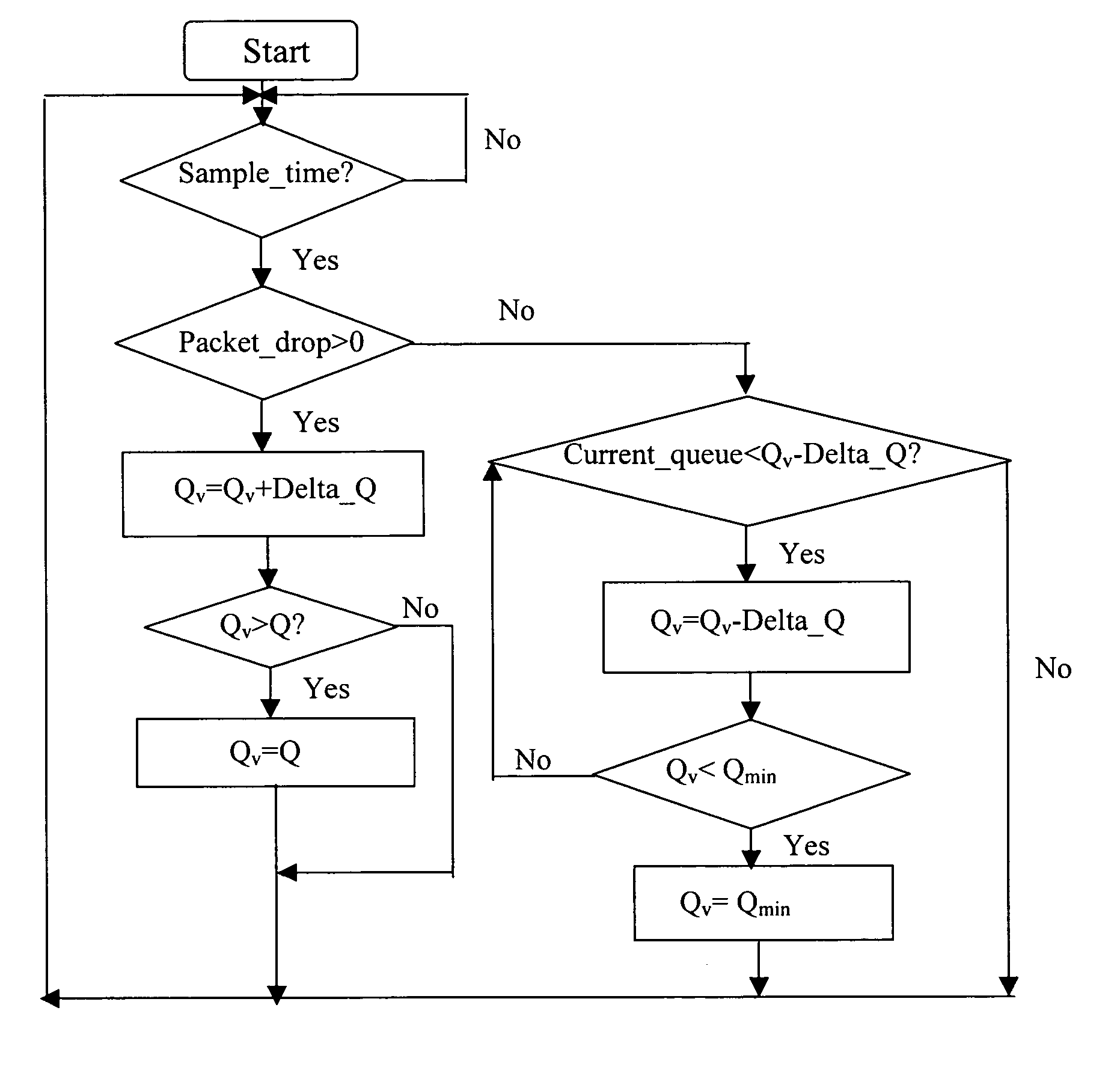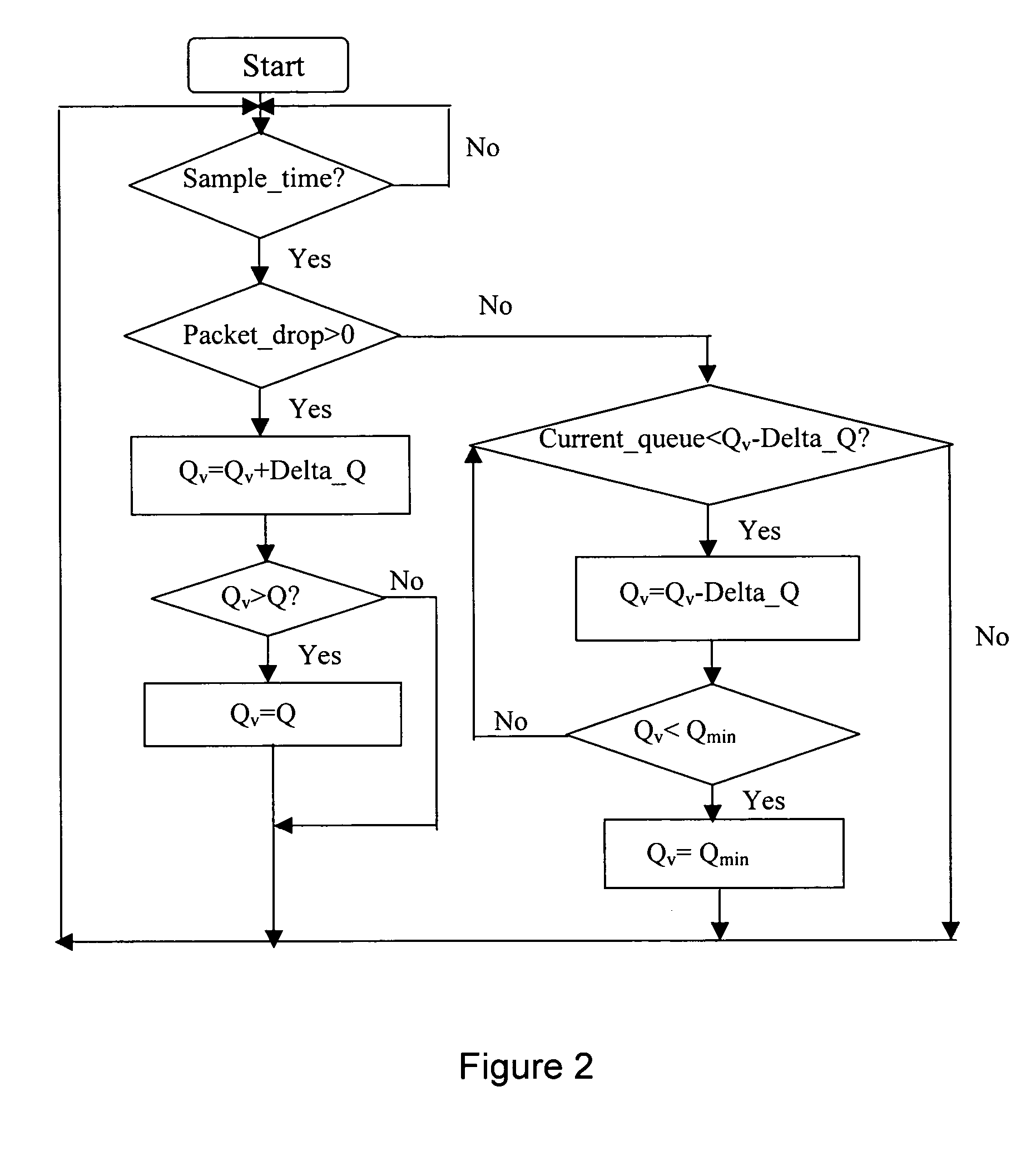Queue-based active queue management process
a queue management and queue technology, applied in the field of queue-based active queue management process, can solve the problems of reducing the buffer capacity, affecting the throughput and stability of the queue, and increasing the packet latency, so as to increase the buffer capacity, reduce the buffer capacity, and increase the queue size threshold
- Summary
- Abstract
- Description
- Claims
- Application Information
AI Technical Summary
Benefits of technology
Problems solved by technology
Method used
Image
Examples
Embodiment Construction
[0020] Active Queue Management processes are executed by network equipment that is capable of transmitting and receiving packets of a packet communications network, such as the Internet. The equipment includes routers, switches and servers that have input / output ports coupled to a physical transmission medium, such as optical fibre, cable or copper wire. Queues are established at the ports to control the transmission and reception of packets on the links established between the ports. This is required to ensure that link congestion does not occur, as each link only has a predetermined capacity.
[0021] For example, a router 2, as shown in FIG. 1, has a plurality of output communication ports 4 connected to physical media that are used to establish output communication links 6 to input ports of other devices. The router also has input ports 8 for input communication links 10. The links 6, 10 may be logical or physical links. The router may be specifically configured to handle IP (Inte...
PUM
 Login to View More
Login to View More Abstract
Description
Claims
Application Information
 Login to View More
Login to View More - R&D
- Intellectual Property
- Life Sciences
- Materials
- Tech Scout
- Unparalleled Data Quality
- Higher Quality Content
- 60% Fewer Hallucinations
Browse by: Latest US Patents, China's latest patents, Technical Efficacy Thesaurus, Application Domain, Technology Topic, Popular Technical Reports.
© 2025 PatSnap. All rights reserved.Legal|Privacy policy|Modern Slavery Act Transparency Statement|Sitemap|About US| Contact US: help@patsnap.com



